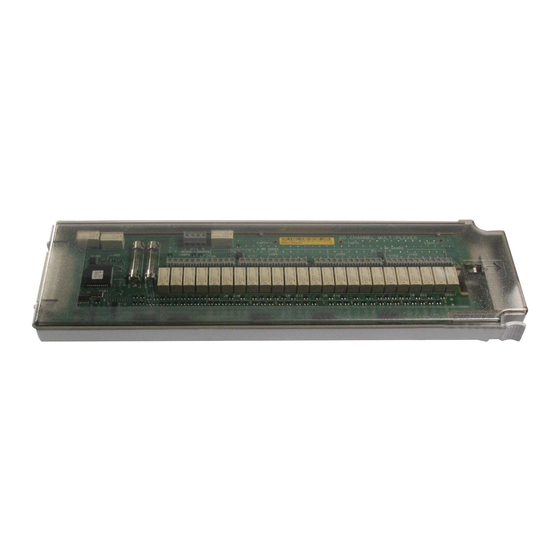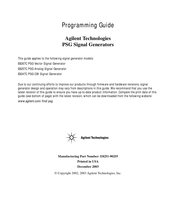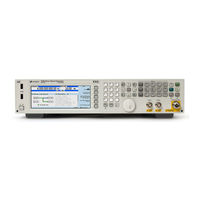
Agilent Technologies E8257C Manuals
Manuals and User Guides for Agilent Technologies E8257C. We have 5 Agilent Technologies E8257C manuals available for free PDF download: Service Manual, User Manual, Programming Manual, Manual, Installation Manual
Agilent Technologies E8257C Service Manual (291 pages)
PSG Signal Generators
Brand: Agilent Technologies
|
Category: Portable Generator
|
Size: 12.28 MB
Table of Contents
-
A18 Cpu96
-
A7 Reference104
-
A6 Frac-N105
-
A9 YIG Driver106
-
A6 Frac-N111
-
A8 Output111
-
ALC Loop113
-
Tools Required130
-
Tools Required132
-
Front Panel134
-
Tools Required134
-
A1 Keyboard137
-
Tools Required137
-
A2 Display139
-
Tools Required139
-
Tools Required141
-
A3 Power Switch143
-
Tools Required143
-
A4 Inverter145
-
Tools Required145
-
Tools Required147
-
A9 YIG Driver149
-
Tools Required149
-
A10 Alc151
-
Tools Required151
-
Tools Required153
-
Tools Required155
-
Tools Required157
-
Tools Required159
-
Tools Required161
-
A18 Cpu163
-
Tools Required163
-
A18Bt1165
-
Tools Required165
-
A19 Power Supply167
-
Tools Required167
-
Tools Required169
-
Tools Required172
-
Tools Required175
-
Tools Required177
-
A22 Line Module179
-
Tools Required179
-
Tools Required181
-
Tools Required183
-
Tools Required185
-
Tools Required187
-
Tools Required189
-
Tools Required191
-
Tools Required193
-
Tools Required195
-
Tools Required197
-
Tools Required199
-
Tools Required201
-
Tools Required203
-
Tools Required205
-
Tools Required208
-
Tools Required211
-
Tools Required215
-
A33 6 Db PAD217
-
Tools Required217
-
Tools Required219
-
Tools Required221
-
B1 Fan223
-
Tools Required223
-
Cables244
-
Hardware249
-
Front Panel View250
-
Miscellaneous273
-
Accessories273
-
Documentation273
-
Assistance286
-
Certification286
Advertisement
Agilent Technologies E8257C User Manual (220 pages)
PSG Signal Generators
Brand: Agilent Technologies
|
Category: Inverter
|
Size: 2.41 MB
Table of Contents
-
-
Options14
-
Front Panel16
-
Display17
-
Softkeys17
-
Knob17
-
Amplitude17
-
Frequency17
-
Save17
-
Recall17
-
Trigger18
-
Menus18
-
Help18
-
Ext 1 Input18
-
Ext 2 Input19
-
Lf Output19
-
Mod On/Off19
-
Alc Input19
-
RF On/Off19
-
Rf Output20
-
Sync out20
-
Video out20
-
Power Switch20
-
Standby LED20
-
Incr Set20
-
Arrows21
-
Hold21
-
Return21
-
-
Local21
-
Preset21
-
I/Q Inputs22
-
Data Input22
-
Rear Panel27
-
Gpib28
-
Lan28
-
Sweep out29
-
Trigger out29
-
Trigger in29
-
Event 130
-
Event 230
-
Digital Bus32
-
I out32
-
I-Bar out33
-
-
-
-
-
-
-
Overview130
-
-
-
Troubleshooting
197-
Sweep Problems204
-
Error Messages210
Agilent Technologies E8257C Programming Manual (198 pages)
PSG Signal Generators
Brand: Agilent Technologies
|
Category: Portable Generator
|
Size: 2.18 MB
Table of Contents
-
Using GPIB10
-
Using LAN18
-
Using VXI-1122
-
Using FTP26
-
Using RS-23228
-
Using28
-
Overview120
-
Status Groups132
-
Types of Memory158
Advertisement
Agilent Technologies E8257C Manual (48 pages)
Series A, B, X Signal Generators
Brand: Agilent Technologies
|
Category: Inverter
|
Size: 0.75 MB
Table of Contents
Agilent Technologies E8257C Installation Manual (36 pages)
PSG Signal Generators
Brand: Agilent Technologies
|
Category: Portable Generator
|
Size: 0.51 MB




